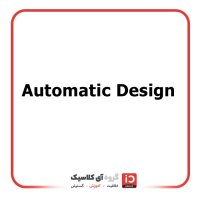What is Automatic Design in UI, and Why is it Important
Introduction
User Interface (UI) design plays a crucial role in User Experience (UX). In the modern world, with the growing demand for fast, optimized, and personalized designs, Automatic Design has emerged as an essential solution. This concept involves using algorithms, artificial intelligence, and machine learning to automate the design and optimization of user interfaces. In this article, we will explore this concept, its advantages, and its challenges.
What is Automatic Design?
Automatic Design refers to a process in which intelligent technologies are used to automate parts of UI design. This method may include auto-generating layouts, suggesting color schemes, creating graphic elements, or even optimizing user interactions.
For example, tools like Adobe Sensei and Figma AI help designers generate design suggestions based on user data. Additionally, Design System Automation enables developers to generate and optimize UI components based on predefined patterns.
Advantages of Automatic Design in UI
1. Faster Speed and Higher Efficiency
Using automated design reduces the time required to create new designs. Instead of manually designing each element, algorithms can suggest optimal combinations automatically.
2. Personalized User Experience
AI algorithms can optimize designs based on user data. For instance, a website can adjust its layout and colors according to a user’s preferences.
3. Consistency in Design
Automated design systems help create standardized and consistent designs across different platforms, enhancing visual coherence and a unified user experience.
4. Reduced Human Errors
Manual design can include human errors, but automated algorithms minimize these mistakes and increase design accuracy.
Challenges and Limitations of Automatic Design
1. Lack of Human Creativity
Although automation improves efficiency, human creativity and aesthetic judgment remain crucial in UI design. Automated systems may not fully understand emotions and visual appeal.
2. Dependence on Quality Data
Automated design models require high-quality data to generate accurate suggestions. Poor or insufficient data may result in suboptimal design outputs.
3. Technology Dependence and Implementation Costs
Automated design tools require advanced technological infrastructure, which can be costly. Additionally, companies need the technical expertise to manage these tools effectively.
Conclusion
Automatic Design is one of the most significant trends in UI design, offering speed, improved UX, and reduced design errors. However, this technology still needs further development before it can fully replace manual design. The best approach is to combine human creativity with AI to create optimal and engaging UI designs.



